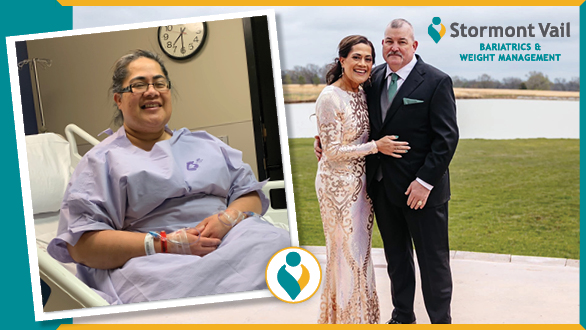Newsworthy
Active Assailant Training in Healthcare Settings
An average of 15 casualties occurs every 60 seconds during an active shooter incident. In 2022, the Federal Bureau of Investigation designated 50 shootings as active assailant incidents, of which one happened in a healthcare setting. Unfortunately, this concerning trend shows no signs of slowing down.
Active assailant events continue to be increasingly prevalent in the U.S. For this reason, healthcare organizations like Stormont Vail Health hosted “Active Assailant in the Healthcare Setting,” an informational presentation intended to help team members understand how to:
- Develop situational awareness and respond to suspicious behavior
- Respond in an active assailant situation
- Utilize effective communication to diffuse conflict
- Respond based on healthcare workers’ ethical and moral obligations to patients
This presentation was possible thanks to support from local partners, including the Kansas Hospital Association, Kansas Rehabilitation Hospital, Northeast Kansas Healthcare Coalition, Shawnee County Emergency Management, Stormont Vail Health, Topeka Police Department, U.S. Department of Homeland Security, and The University of Kansas Health System St. Francis Campus.
How to Develop Situational Awareness & Respond to Suspicious Behavior
Stormont Vail Security works closely with local law enforcement to develop processes intended to identify vulnerabilities, threats, and risks. Security team members share information from across the organization with local law enforcement, who implement the response to an incident.
Steve Taylor, Stormont Vail Security Manager since 2015, has conducted multiple active assailant training at the Topeka Campus Hospital and New Employee Orientations. Through his extensive training and experience, risk management and threat identification have become second nature. But regardless of background, it’s everyone’s job to help avoid or minimize potential threats.
“The Security team at Stormont Vail depends on many sources to collect data, including team members from every department team, not just Security,” said Taylor. “One of the best ways team members can help is learning how to recognize the seven signs of crime.”
These signs include:
- Surveillance (recording activities, drawing maps, possessing floor plans or blueprint notes)
- Solicitation (asking team members unusual questions or for information)
- Probing (testing security by entering restricted areas)
- Gathering supplies (acquiring uniforms, airline passes, ammunition, forged documents)
- Suspicious behavior (loitering)
- Trial runs (mapping routes)
- Getting into position (One of the last chances to report activity to law enforcement)
Since we can’t predict when and where an incident will occur, all hands are needed to protect each other, patients, and the organization. Fine-tuning situational awareness and identifying potential vulnerabilities, risks, and threats supports security and law enforcement’s efforts to minimize hazards and enhance safety for everyone.
How to Respond in an Active Assailant Situation
Because these incidents are unpredictable, there is no definite course of action, which requires instant decision-making. For this reason, mental preparation is a crucial aspect of training against an active assailant. One way to improve mental preparation is by knowing details about your workplace, such as the layout and plans for active assailant situations. Stormont Vail follows the “Run, Hide, Fight” guidelines set out by the U.S. Department of Homeland Security:
- Run: Be aware of alternate exits wherever you are in the building. Quickly and cautiously evacuate in a direction away from the perpetrator. Leave your belongings behind and help others escape if it doesn’t endanger you. As you run, stop others from entering the area. Call 911 when you are safe.
- Hide: If you cannot safely escape, find a hiding place. Lock and barricade the door, turn off the lights, silence your phones, and prepare a defense plan.
- Fight: Use objects as improvised weapons only as a last resort. If you are with others, work as a team and use the element of surprise to overpower the perpetrator. Stay hidden until law enforcement arrives or a safe opportunity to run presents itself.
Effective Communication Skills to Diffuse Conflict
60% of all workplace assaults occurred to healthcare workers, despite comprising 13% of the workforce. Additionally, according to the U.S. Bureau of Labor Statistics, 73% of nonfatal workplace violence injuries occurred to healthcare workers in 2018. This troublesome frequency makes healthcare one of the most dangerous workplaces outside of law enforcement.
When healthcare professionals enter the field, they do so with an understanding of the inherent risks of working with patients and visitors experiencing behavioral health emergencies, dementia, duress, and other complexities. However, workplace violence is not “part of the job.”
While practical communication skills don’t guarantee conflict resolution or stop an active assailant situation, they improve how we address underlying problems and may help avoid potential crises. For this reason, understanding your conflict style (accommodating, avoiding, compromising, competing, and collaborating) can help you change your initial reaction to a conflict. Following the Empathy, Attention, and Respect (EAR) Model can also guide you through tense situations and adapt your response accordingly.
Understanding the Moral Obligations of Healthcare Workers
In an active assailant incident, healthcare workers face unique moral and ethical dilemmas that complicate traditional responses to active assailant situations. These challenges include the “duty-to-care” commitment, patient mobility, and complex needs. For many, the thought of abandoning a patient is unthinkable. However, doing so is the right decision and will prevent more loss of life and conserve resources after the crisis.
“As healthcare workers, it goes against everything in our being to leave a person behind,” said Sarah Evans Simpson, a Forensic Nurse Supervisor in the Emergency Department who presented this section. “In these situations, it’s important to understand that we cannot care for people if we are injured. Taking care of ourselves has not generally been our top priority; in this case, it has to be.”
In a hospital setting, the response will vary depending on the patient’s mobility and the area affected by the shooting. Suppose an active assailant situation occurred at any Stormont Vail clinics or the Topeka Campus Hospital. In that case, healthcare teams should follow the “Secure, Preserve Fight” model The New England Journal of Medicine outlined as a supplementary strategy to “Run, Hide, Fight.”
- Secure: patients and lockdown critical areas, such as operating rooms, treatment and intensive care units; move mobile and immobile patients to a safe place if possible; run to a designated safe location if escape is not immediately possible.
- Preserve: This phase will likely be the primary response for immobile patients and their caregivers. If running is not an option, preserve the safety of patients and visitors. Hide in a room with thick walls and limited windows, silence electronics, and lock door(s) and barricade entrances.
Additionally, team members should communicate the threat to law enforcement and others at the facility using appropriate procedures, such as auditory systems, visual cues, and text messages. Organizations should also ensure law enforcement’s familiarity with and access to a first responder kit that includes facility maps, access keys, two-way radios, and other relevant items.
Join the Next Active Assailant Training Session
Stormont Vail and its partners offer the “Active Assailant in the Healthcare Setting” training bi-annually. Spring training occurs at The University of Kansas Health System St. Francis Campus, and Fall training takes place in the Stormont Vail Topeka Campus Hospital Pozez Education Center Auditorium. Attendees can also attend either session via Zoom.
This course is open to the public and well attended by community partners, healthcare workers and other professionals. If you missed this presentation, stay tuned for future announcements about the next opportunity. You can also email our Continuing Education team at [email protected].
Thank you again to our partners and presenters!
Sources
- Active Assailant Events Are Now an Unfortunate Emerging Risk. (n.d.). Www.oswaldcompanies.com. Retrieved August 30, 2023, from https://www.oswaldcompanies.com/risk-hubs/active-assailant/
- FBI. (2022). Active Shooter Incidents in the United States in 2021. Federal Bureau of Investigation. https://www.fbi.gov/file-repository/active-shooter-incidents-in-the-us-2021-052422.pdf/view
- News, A. B. C. (n.d.). Attacks at US medical centers show why health care is one of the nation’s most violent fields. ABC News. Retrieved August 30, 2023, from https://abcnews.go.com/Health/wireStory/attacks-us-medical-centers-show-health-care-nations-102063180
- Wax, J. R., Pinette, M. G., & Cartin, A. (2016). Workplace Violence in Health Care-It’s Not “Part of the Job.” Obstetrical & gynecological survey, 71(7), 427-434. https://doi.org/10.1097/OGX.0000000000000334




